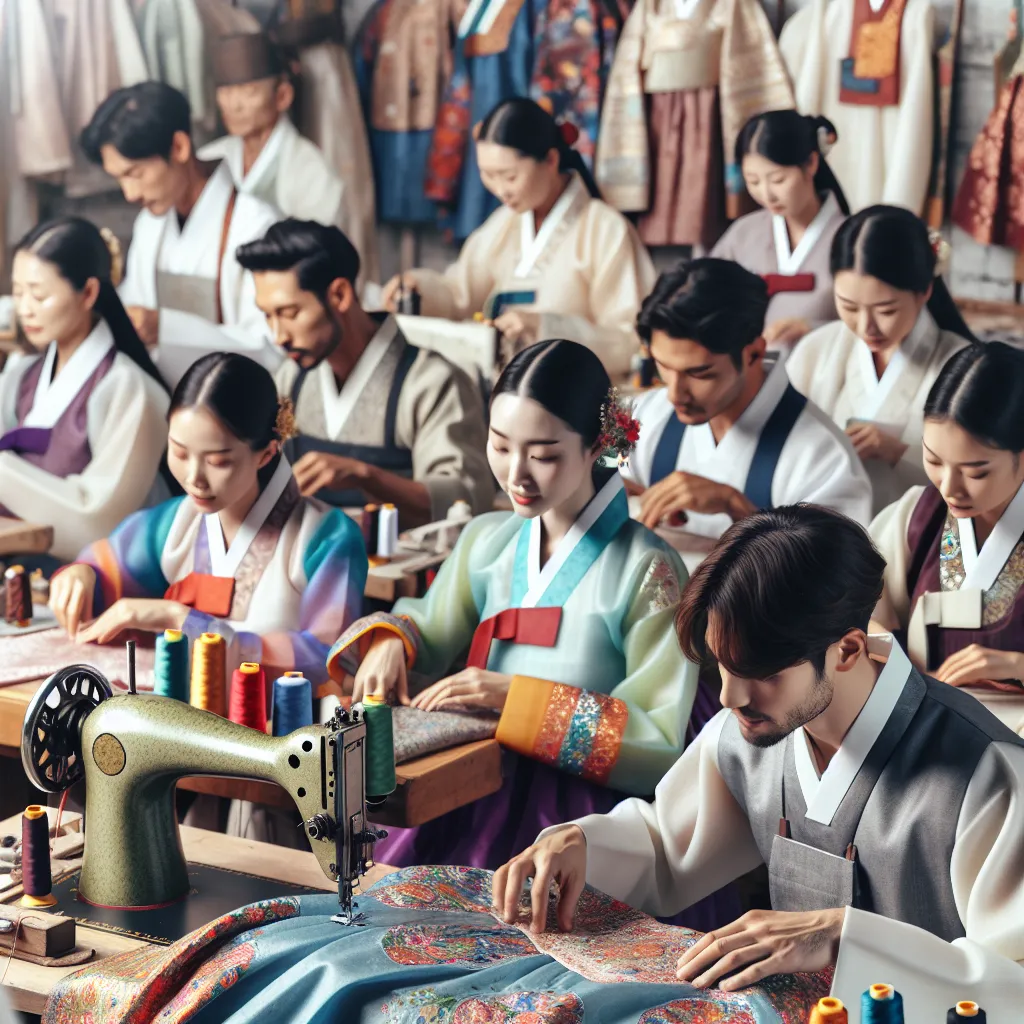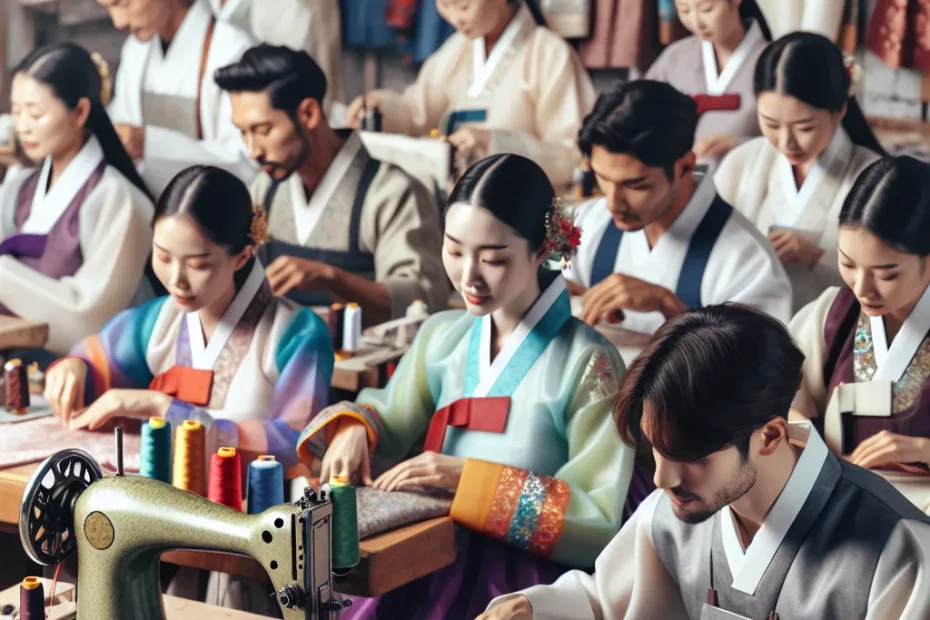Hanbok, the traditional Korean dress, holds a significant cultural and historical value that reflects the essence of Korean heritage. Originating from ancient times, Hanbok has evolved over centuries, embodying the rich history and traditions of Korea. Its intricate design and unique features showcase the craftsmanship and artistry of Korean artisans throughout the ages. The diverse styles of Hanbok cater to various occasions and social statuses, demonstrating the depth of Korean sartorial culture. Despite its traditional roots, Hanbok continues to evolve, influenced by modern trends and global fashion, while maintaining its timeless elegance and charm. In today’s world, understanding the origin, design, and variety of Hanbok styles is essential to appreciating the cultural significance it holds.

Origin and History of Hanbok
In the rich tapestry of Korean culture, the hanbok stands out as a symbol of tradition and elegance. The history of hanbok dates back to ancient times, with its origins rooted deep in the Korean peninsula’s history. The hanbok’s design and style have evolved over centuries, reflecting the social, cultural, and political changes of the Korean people.
Traditional Garment of Korea
Hanbok, which translates to “Korean clothing,” is a traditional attire worn by Koreans for centuries. It is characterized by vibrant colors, graceful lines, and exquisite embroidery, making it a cultural treasure of Korea. The hanbok is not just a piece of clothing but a representation of Korea’s rich heritage and identity.
Historical Significance
The history of hanbok can be traced back to the Three Kingdoms period (57 BC – 668 AD) when different styles of clothing were worn by people from different social classes. During the Goryeo Dynasty (918–1392), hanbok became more formalized, with distinct styles for men and women. The Joseon Dynasty (1392–1910) saw the hanbok evolve into the form we recognize today, with its iconic jeogori (jacket) and chima (skirt) for women and jeogori and baji (pants) for men.
Symbolism and Design
Each element of the hanbok carries symbolic meaning. The vibrant colors, such as red, blue, yellow, and green, represent different virtues and social status. The intricate embroidery and patterns reflect nature, with motifs like flowers, birds, and clouds adorning the fabric. The overall design of the hanbok emphasizes harmony and balance, reflecting the Confucian ideals of the time.
Evolution and Modern Influence
While hanbok has deep roots in tradition, it has also adapted to modern times. Today, hanbok is not only worn on special occasions like weddings and festivals but has also made its way into contemporary fashion. Designers are incorporating hanbok elements into modern clothing, creating a fusion of traditional and modern styles. Hanbok’s influence can be seen on runways, in K-pop music videos, and even on the streets of Seoul.
Preserving Cultural Heritage
In a rapidly changing world, the hanbok serves as a reminder of Korea’s cultural heritage and identity. Efforts are being made to preserve and promote hanbok, ensuring that future generations continue to appreciate its beauty and significance. Through exhibitions, workshops, and cultural events, hanbok remains a vibrant and living tradition, connecting the past with the present.
From its ancient origins to its modern influence, the hanbok continues to captivate people with its beauty, symbolism, and timeless elegance. As a symbol of Korean tradition and identity, the hanbok stands as a testament to the enduring legacy of Korea’s rich cultural heritage.
🌸
Design and Features of Hanbok
Design
The design of hanbok is characterized by its vibrant colors, graceful lines, and elegant silhouette. Traditional hanbok consists of a jeogori (jacket) and chima (skirt) for women, while men wear a jeogori and baji (pants). The intricate embroidery, known as ‘ggotji,’ adds a touch of sophistication to the overall design. The wide sleeves and loose fit of hanbok symbolize modesty and grace, making it a timeless attire that transcends fashion trends.
Features
One of the distinctive features of hanbok is its use of natural materials such as silk, hemp, and ramie, which are breathable and comfortable to wear. The vibrant colors of hanbok, such as red, blue, and yellow, are not just for aesthetic purposes but also hold symbolic meanings. For example, red symbolizes passion and energy, while blue represents peace and harmony. The intricate patterns and designs on hanbok reflect the wearer’s social status, with more elaborate designs reserved for special occasions and ceremonies.
Cultural Significance
Hanbok is more than just a piece of clothing; it is a cultural symbol that embodies the values and traditions of Korean society. The wearing of hanbok is a way to honor and preserve Korean heritage, connecting the past with the present. In modern times, hanbok continues to evolve, with contemporary designers incorporating traditional elements into modern designs, ensuring that hanbok remains relevant and cherished by future generations.
In conclusion, the design and features of hanbok showcase the artistry and craftsmanship of Korean culture, making it a truly unique and iconic attire. From its vibrant colors to intricate embroidery, hanbok embodies the essence of Korean tradition and identity, making it a timeless symbol of cultural pride and heritage. Embrace the beauty and elegance of hanbok, a sartorial masterpiece that transcends time and trends!
Variety in Hanbok Styles
Hanbok, the traditional Korean attire, showcases a rich diversity of styles that reflect the country’s cultural heritage and historical influences. From the vibrant colors to the intricate designs, Hanbok comes in various forms, each with its unique characteristics and significance.
Regional Variations in Jeogori
The Jeogori, the upper garment of the Hanbok, is a key component that varies in style across different regions of Korea. In the Gyeonggi region, the Jeogori is known for its simple and elegant design, often featuring muted colors and subtle embroidery. On the other hand, the Jeolla region is famous for its bold and colorful Jeogori, adorned with intricate patterns and vibrant hues.
Diversity in Chima Styles
Moving on to the Chima, the skirt of the Hanbok, we see another aspect of the diversity in Hanbok styles. The Jeonbok Chima from the Jeolla region is characterized by its voluminous silhouette and elaborate decorations, while the Gyeonggi region’s Wonsam Chima is known for its more understated and refined look.
Role of Accessories
Accessories play a crucial role in completing the Hanbok ensemble, adding an extra layer of sophistication and elegance. The Norigae, a traditional Korean ornament, varies in design and size based on the wearer’s social status and occasion. From intricate beading to delicate tassels, the Norigae adds a touch of glamour to the Hanbok outfit.
In modern times, Hanbok has evolved to incorporate contemporary elements while staying true to its traditional roots. Designers are experimenting with different fabrics, patterns, and silhouettes to create a fusion of the old and the new. This blend of tradition and innovation has brought a fresh perspective to Hanbok fashion, appealing to a wider audience both in Korea and around the world.
The beauty of Hanbok lies in its versatility and adaptability, making it a timeless symbol of Korean culture and identity. Whether worn on special occasions or as everyday attire, Hanbok continues to captivate hearts with its exquisite craftsmanship and timeless elegance.
Embrace the beauty and diversity of Hanbok styles, a true reflection of Korea’s rich cultural heritage and artistic traditions! 🌸👘✨
Modern Influence on Hanbok
In recent years, the traditional Korean dress, known as Hanbok, has experienced a significant transformation influenced by modern trends and global fashion. This evolution has not only preserved the essence of Hanbok but also infused it with a contemporary flair, making it a popular choice for various occasions beyond traditional ceremonies.
Modern Influences on Hanbok
One of the notable modern influences on Hanbok is the incorporation of vibrant colors and unconventional designs. While traditional Hanbok was characterized by its subdued tones and classic silhouettes, contemporary Hanbok designers have introduced bold hues and innovative patterns, appealing to a younger generation seeking a fusion of tradition and modernity. The use of luxurious fabrics such as silk and satin has also added a touch of sophistication to the modern Hanbok, elevating its status as a fashionable attire.
Adaptation for Different Purposes
Furthermore, the adaptation of Hanbok for different purposes has contributed to its modernization. Designers have reimagined Hanbok pieces to suit various events, from casual gatherings to formal functions, making it a versatile wardrobe choice for individuals looking to make a style statement rooted in Korean heritage. This versatility has not only expanded the appeal of Hanbok within South Korea but has also garnered international attention, with fashion enthusiasts worldwide embracing the elegance of this traditional attire.
Role of Social Media and Popular Culture
Social media and popular culture have played a significant role in promoting the modernization of Hanbok. Influencers and celebrities often showcase their interpretation of Hanbok on various online platforms, sparking interest and curiosity among their followers. This exposure has led to a resurgence of interest in Hanbok, with many individuals incorporating it into their everyday wear as a symbol of cultural pride and fashion-forward thinking.
In conclusion, the modern influence on Hanbok has redefined its place in contemporary society, blending tradition with innovation to create a unique sartorial identity. As Hanbok continues to evolve and adapt to changing fashion trends, its timeless elegance and cultural significance remain at the core of its enduring appeal. Embracing the modernization of Hanbok not only preserves a rich cultural heritage but also paves the way for its continued relevance in the dynamic world of fashion and style. 🌟👘🌸
In conclusion, Hanbok stands as a symbol of Korea’s rich cultural heritage, embodying centuries of tradition and artistry. Its intricate designs and vibrant colors reflect the country’s deep-rooted customs and values. The evolution of Hanbok over time showcases the adaptability of Korean culture while maintaining its essence. With modern influences, Hanbok continues to thrive, bridging the gap between tradition and contemporary fashion. As a timeless attire that transcends generations, Hanbok remains a source of pride and identity for the Korean people, embodying elegance, grace, and the spirit of the nation.
